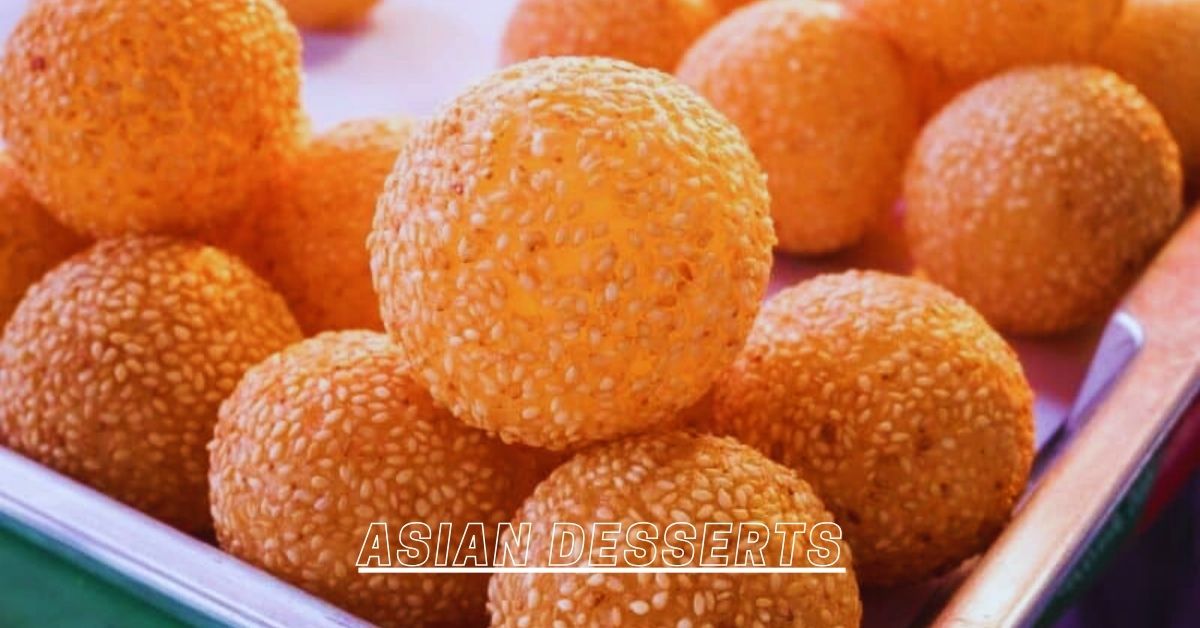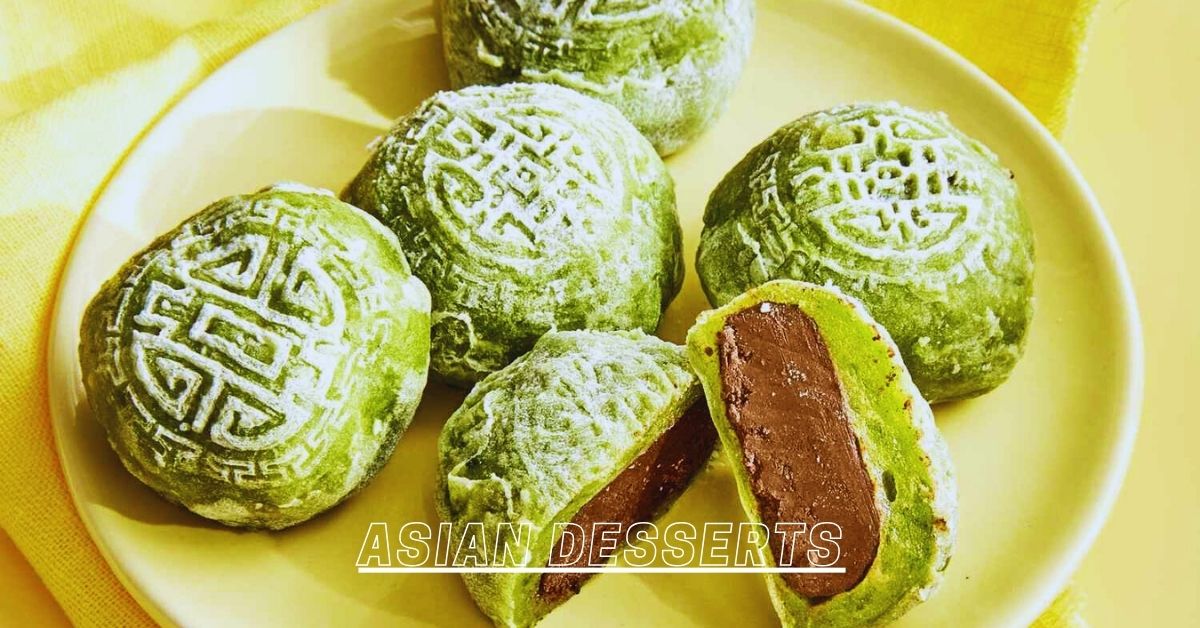Introduction
Asian desserts are a delightful tapestry of flavors, textures, and traditions that reflect the rich culinary heritage of the continent. From the fragrant sweetness of mango sticky rice to the unique textures of mochi and red bean paste, these desserts offer a world of diversity and deliciousness. In this comprehensive guide, we will delve into 10-15 popular Asian desserts, exploring their origins, ingredients, preparation methods, and cultural significance.
Mango Sticky Rice (Khao Niew Mamuang)
Mango Sticky Rice, or Khao Niew Mamuang, is a quintessential Thai dessert that showcases the perfect balance of sweet, salty, and creamy flavors. This dish consists of sticky rice cooked in coconut milk, served with ripe mango slices and a drizzle of coconut sauce. The sticky rice is steamed to a tender consistency and then mixed with sweetened coconut milk, giving it a rich, creamy texture. Often garnished with sesame seeds or mung beans, Mango Sticky Rice is a popular choice during the mango season in Thailand and is loved for its simplicity and satisfying taste.
Japanese Mochi
Mochi is a traditional Japanese rice cake made from glutinous rice, known for its chewy texture and subtle sweetness. The rice is steamed and pounded until it becomes a smooth, elastic dough. Mochi can be enjoyed plain or with various fillings, such as sweet red bean paste (anko), fruit, or even savory ingredients. During the New Year celebrations, mochi is often used in dishes like Ozoni, a traditional soup. Mochi is also a key ingredient in popular treats like daifuku, which are stuffed with a variety of sweet fillings.
Chinese Egg Tarts (Dan Tat)
Chinese Egg Tarts, or Dan Tat, is a beloved pastry found in many dim sum restaurants across China and Hong Kong. These tarts feature a delicate, flaky crust filled with a smooth, creamy egg custard. The filling is made from a mixture of eggs, sugar, milk, and vanilla, creating a custard that is both sweet and rich. The egg tarts are baked until the custard is set and the crust is golden brown. They are often enjoyed warm or at room temperature and are a favorite treat during tea time.
Korean Patbingsu
Patbingsu is a refreshing Korean dessert that combines shaved ice with a variety of sweet toppings. Traditionally, it includes sweetened red bean paste, condensed milk, and fresh fruit like strawberries or mangoes. Modern variations may also include ingredients such as cereal, ice cream, or mochi. The shaved ice is finely textured, giving it a fluffy, melt-in-your-mouth quality. Patbingsu is particularly popular during the hot summer months and is enjoyed for its cooling effect and customizable nature.
Indian Gulab Jamun
Gulab Jamun is a classic Indian dessert made from deep-fried milk solids, which are then soaked in a fragrant sugar syrup flavored with rose water and cardamom. The dough balls are cooked until golden brown and then immersed in the syrup, which allows them to absorb the sweet, aromatic flavors. Gulab Jamun is often served warm and is a staple at festivals and special occasions. Its rich, syrup-soaked texture and sweet, floral notes make it a beloved treat throughout the Indian subcontinent.
Vietnamese Che Ba Mau
Che Ba Mau, or Three-Color Dessert, is a visually stunning Vietnamese treat that features layers of colorful ingredients in a sweet coconut milk base. The dessert typically includes red beans, mung beans, and pandan jelly, each layered in a glass and topped with crushed ice and coconut milk. The combination of textures—from the creamy coconut milk to the chewy jelly and tender beans—creates a satisfying and refreshing dessert. Che Ba Mau is enjoyed for its vibrant appearance and the contrast of flavors and textures.
Thai Coconut Jelly (Woon Mamuang)
Thai Coconut Jelly, or Woon Mamuang, is a delightful dessert made from layers of coconut-flavored gelatin. The jelly is prepared by mixing coconut milk with agar-agar or gelatin, creating a firm yet smooth texture. It is often served in small, bite-sized pieces and can be garnished with fresh fruit or served with a drizzle of sweet syrup. Woon Mamuang is known for its light, refreshing taste and is a popular choice for those who prefer a less sweet dessert option.
Japanese Anmitsu
Anmitsu is a traditional Japanese dessert that combines a variety of ingredients in a bowl, creating a colorful and flavorful treat. The base of Anmitsu consists of agar jelly cubes, which are often served with sweet red bean paste, fresh fruit, and a drizzle of black syrup called “kuromitsu.” The combination of the jelly’s smooth texture with the sweet, nutty red beans and the fruity elements creates a harmonious blend of flavors. Anmitsu is a popular dessert during the summer months and is enjoyed for its refreshing and customizable nature.
Filipino Halo-Halo
Halo-Halo is a famous Filipino dessert known for its vibrant mix of ingredients and flavors. The name “Halo-Halo” means “mix-mix” in Filipino, and the dessert lives up to its name with a combination of shaved ice, sweetened beans, fruits, jellies, and leche flan, all topped with a scoop of ice cream. The ingredients are layered in a glass and mixed together before eating, creating a delightful mix of textures and flavors. Halo-Halo is especially popular during the hot summer months and is a festive treat enjoyed by many.
Malaysian Cendol
Cendol is a popular Malaysian dessert that features green jelly noodles made from rice flour and pandan leaves, served in a bowl of shaved ice with coconut milk and palm sugar syrup. The green jelly noodles give Cendol its distinctive color and chewy texture, while the sweet palm sugar syrup adds a rich, caramel-like flavor. The combination of the creamy coconut milk and the icy, refreshing base makes Cendol a perfect dessert for cooling down on a hot day. Cendol is often enjoyed with additional toppings like sweet corn or red beans.
Taiwanese Pineapple Cake
Taiwanese Pineapple Cake, or Feng Li Su, is a traditional pastry that consists of a buttery, crumbly crust filled with a sweet pineapple jam. The jam is made from fresh pineapple, sugar, and sometimes winter melon, creating a flavorful and slightly tangy filling. The cakes are often enjoyed as a snack or gift, especially during the Lunar New Year or other festive occasions. The combination of the rich pastry and the fruity filling makes Taiwanese Pineapple Cake a beloved treat in Taiwan and beyond.
Burmese Mont Lone Yay Paw
Mont Lone Yay Paw is a traditional Burmese dessert that consists of sticky rice balls filled with palm sugar and coated in grated coconut. The rice balls are steamed until they are soft and chewy, and the palm sugar filling adds a sweet, caramel-like flavor. The grated coconut coating provides a nice contrast in texture and enhances the overall taste. Mont Lone Yay Paw is commonly enjoyed during festivals and special occasions, and its simple yet satisfying flavors make it a favorite in Burmese cuisine.
Indonesian Klepon
Klepon is a popular Indonesian dessert made from glutinous rice flour, shaped into small balls, and filled with a sweet palm sugar mixture. The rice balls are then rolled in grated coconut, giving them a delightful contrast of textures. When bitten into, the palm sugar filling melts and creates a burst of sweetness. Klepon is often enjoyed as a snack or dessert and is a favorite during traditional celebrations and gatherings. Its chewy texture and sweet, syrupy filling make it a standout treat in Indonesian cuisine.
Cambodian Num Ansom Chek
Num Ansom Chek is a traditional Cambodian dessert that features a sticky rice cake filled with sweetened banana slices and wrapped in banana leaves. The rice cake is steamed until it is firm and aromatic, and the banana filling adds a natural sweetness to the dish. The banana leaves give the cake a distinctive flavor and help to keep it moist. Num Ansom Chek is commonly enjoyed during festivals and special occasions, and its combination of flavors and textures makes it a cherished part of Cambodian culinary traditions.
Japanese Matcha Ice Cream
Matcha Ice Cream is a popular Japanese dessert that incorporates the earthy, slightly bitter flavor of matcha green tea powder into a creamy, frozen treat. The ice cream is made by blending matcha powder with cream, milk, and sugar, creating a smooth and flavorful dessert. Matcha Ice Cream is often enjoyed on its own or as a complement to other desserts, such as mochi or red bean paste. Its vibrant green color and unique flavor make it a standout choice for those seeking a different twist on traditional ice cream.
Conclusion
Asian desserts offer a fascinating glimpse into the diverse culinary traditions of the continent. From the creamy richness of Mango Sticky Rice and the chewy delight of Mochi to the refreshing coolness of Patbingsu and the vibrant flavors of Halo-Halo, these desserts are a testament to the creativity and richness of Asian cuisine. Whether you are exploring these treats for the first time or revisiting your favorites, the wide range of flavors and textures found in Asian desserts ensures that there is something to delight every palate. So, next time you are in the mood for a sweet treat, consider indulging in one of these delightful Asian desserts and experience the sweet symphony of flavors they have to offer.
Read More: Amber Frey: A Comprehensive Overview
